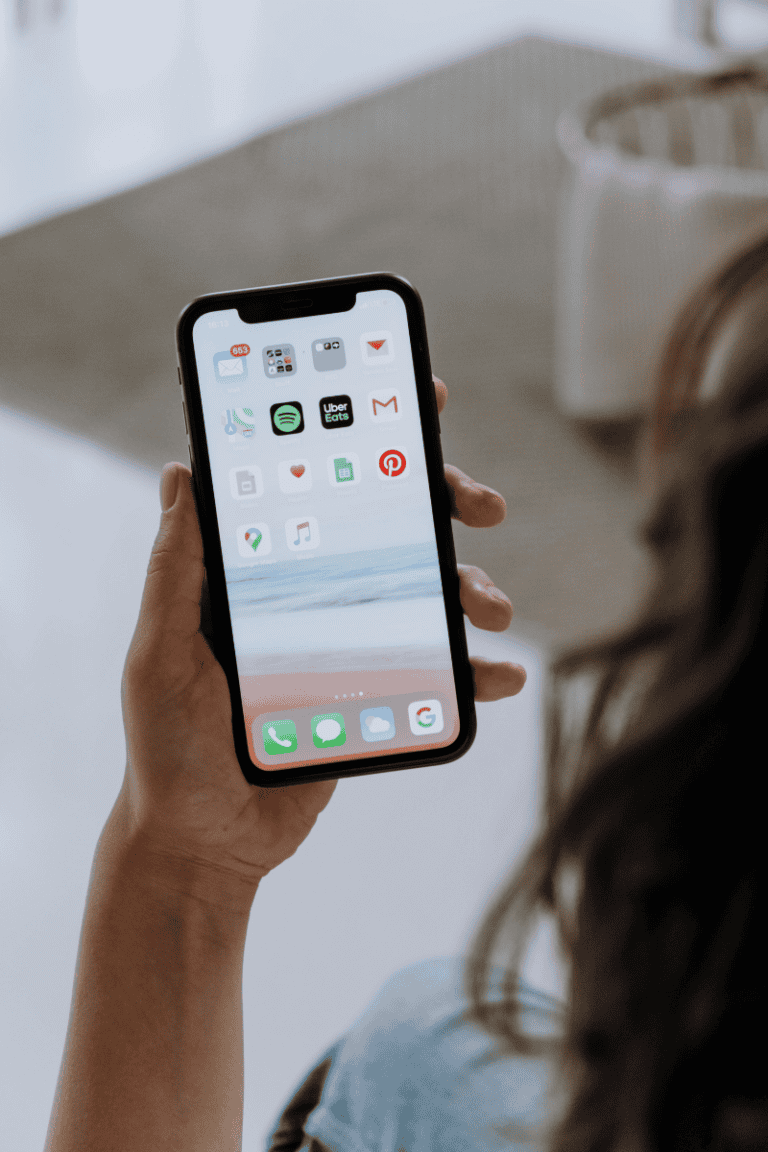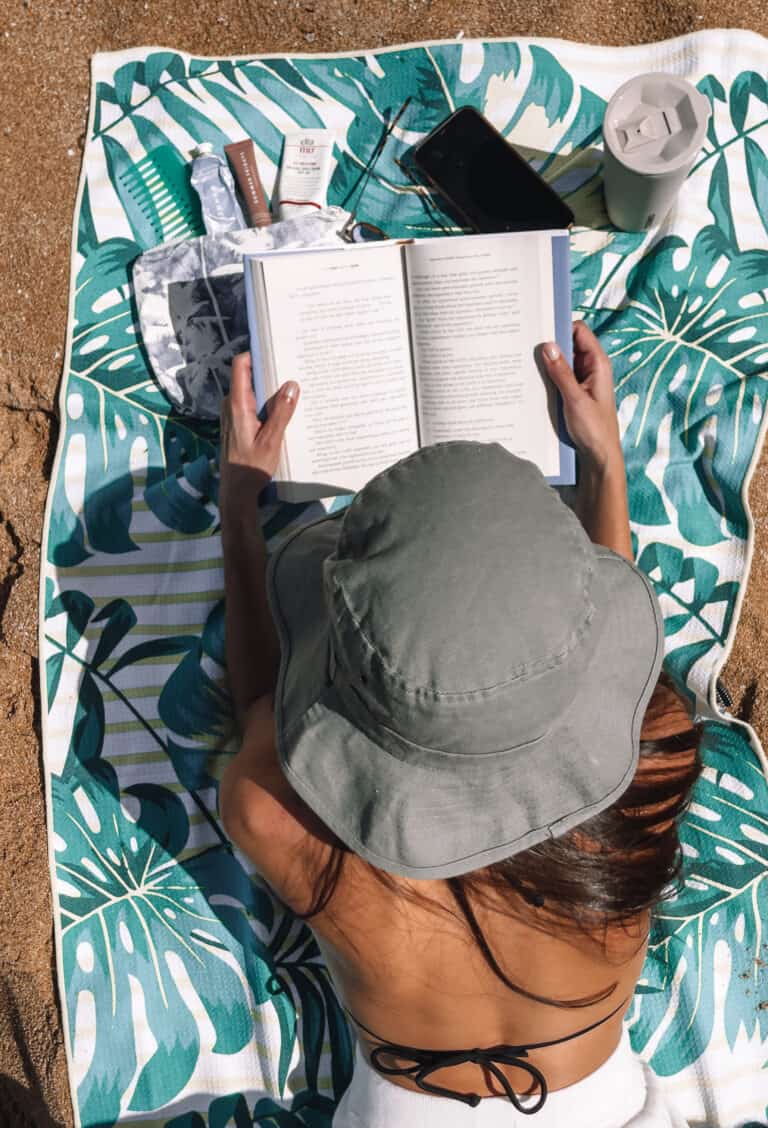Real Mom Advice On How To Budget A Trip
Wondering how to budget for that special trip with your daughter?
Let me share the budgeting strategies and tips that have worked for me for the past twenty years.
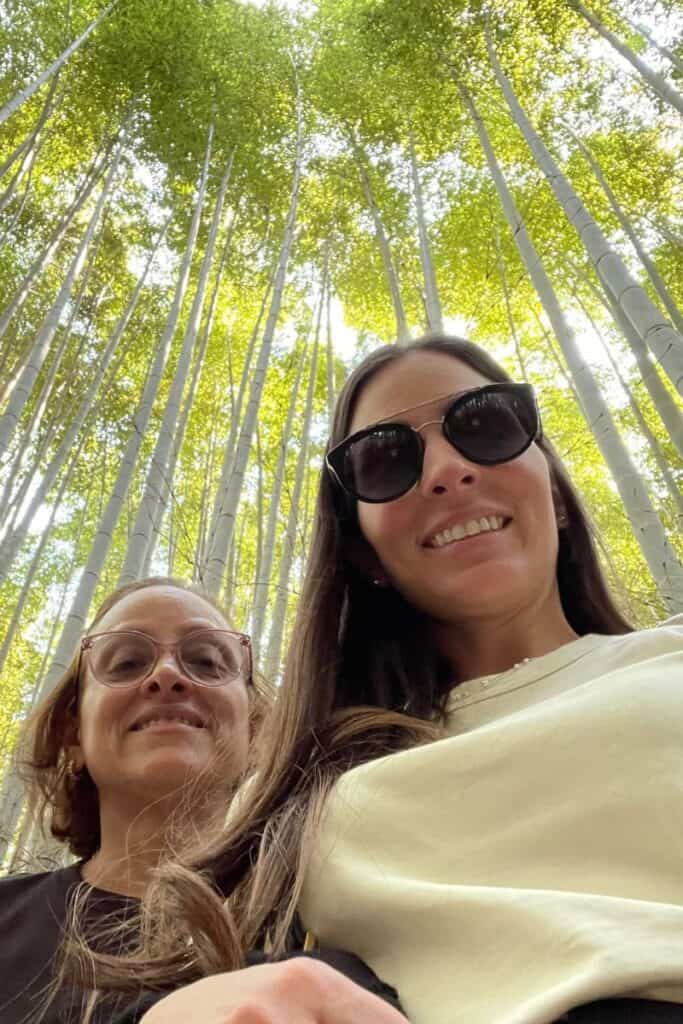
I’ve always loved travel.
I believe hands-on experiences bring more depth and understanding than any lesson in a classroom.
That’s why I made it a priority to travel with my children to as many different places as possible, since they were small.
With time, those trips became a meaningful way to build a strong bond with my daughter.
Especially through her teenage years and into adulthood.
Today, we’ve traveled together to 19 countries, and counting.
You might think travel always requires spending thousands of dollars. You’d be right… and also wrong.
Sure, some trips come with a big price tag, but with planning and prioritizing savings, you can make any trip happen.
One thing I’ve never done?
Gone into debt for travel. And I’ll never recommend it.
Coming home with financial stress defeats the purpose of a meaningful, memorable trip.
So, how do I make it work without breaking the bank?

Budgeting for your Trip
Set a Goal & Budget Together
One of the best ways to start the bonding experience, before you even leave home, is by planning the trip together.
Talk about what’s important to each of you, what kind of experience you want to have, and what’s realistic for your finances.
Set a shared travel goal and budget. It builds excitement, responsibility, and teamwork from the very beginning.
Open a Travel Savings Account and Set Up Automatic Transfers
This is one of my favorite long-term strategies.
Open a separate savings account dedicated only to travel.
Then, set up automatic transfers from your checking account, weekly or monthly.
That way, the savings build up in the background.
Over the years, I’ve contributed different amounts depending on what I could afford at the time.
Sometimes it was a good chunk, sometimes just enough to avoid fees.
The important thing was to always put something in.
Having that account in place kept travel in focus, even when life got busy.
Cut Small Daily Costs (and Big Impulse Buys)
This is a classic savings tip, but it really works.
Identify a couple of small, regular expenses, like fancy coffee or an unused streaming subscription, and redirect that money to your travel fund.
But here’s a challenge that can take your travel savings to the next level.
When you’re out shopping and you find an item considered an impulse buy, pause.
Ask yourself, do I really need this?
If you answer no and can walk away, take the amount you would’ve spent and move it to your travel fund.
That way, the money doesn’t get spent elsewhere, and your choice to skip the purchase feels immediately rewarding.
Use With Caution: Travel Cashback or Points Credit Cards
This one only works if you’re truly disciplined.
Travel rewards credit cards can help offset the cost of airfare or hotels, but they must be paid off in full every single month. No exceptions.
I’ve used a travel points credit card for years and have always paid it off right away.
When my daughter started working, she got her own card that also earns travel rewards, and she’s just as disciplined.
If you can manage it responsibly, the points can really add up over time.
We have paid train, and airline tickets for travel using these accumulated points many times.
Sell Unused Items
If you’re planning one of the expensive trips you may want to look around your home.
You probably have things you no longer use or need.
Host a garage sale or sell items online, like clothes, electronics, books, or toys.
Then transfer every dollar you earn directly into your travel savings account.
It’s an easy way to declutter and make progress toward your goal at the same time.
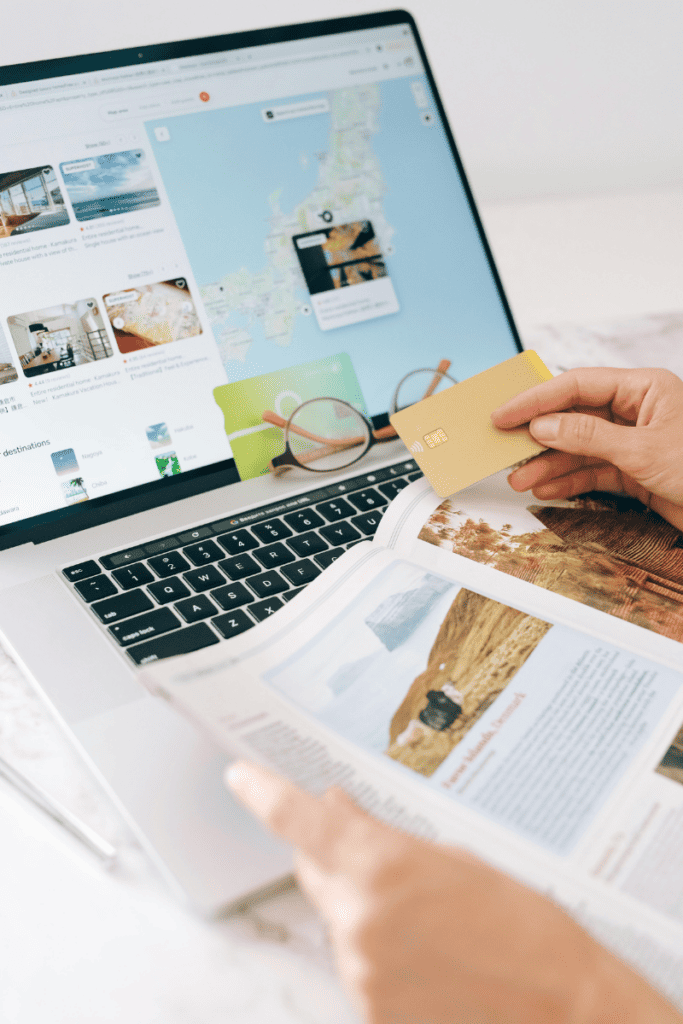
How to Save Before You Leave Home
Book Flights in Advance and Use Fare Trackers
A big part of your travel budget will be taken by the cost of flights and transportation.
Whenever possible, I buy airline tickets months ahead.
They are usually the first thing I purchase for a trip.
I track prices with apps like Hopper or Google Flights and book when fares drop.
That said, airline dynamic pricing can be unpredictable, so just keep an eye out and do your best.
Travel During Shoulder Seasons
Another budget-saving tip is to travel just before or after peak season, which helps avoid crowds and lowers costs.
I know this isn’t an option when your child is still in school.
What we did during those years was travel on the actual holiday if possible.
Traveling on Thanksgiving Day, Christmas Day, and New Year’s Day can be less expensive.
Travel on these days is usually quieter at the airports and on the streets.
And since we’re together it didn’t matter where, just that we were spending that time together.
After my daughter finished school, traveling during the shoulder seasons became our favorite way to save money and have a great experience.
evaluate City Passes
Many cities offer combo passes that bundle popular attractions, public transportation, and local discounts into one ticket.
I’ve found them especially useful when visiting a city for the first time.
Major sights are often included, and some passes even let you skip the regular ticket lines.
Just make sure the attractions are ones you actually want to see; otherwise, you’re not really saving money.
Use Organized Tours Strategically
I usually prefer planning trips independently.
But sometimes, an organized tour is the smartest choice.
Especially when traveling on a tight schedule or when visiting a destination where the language, or culture can be challenging.
Organized tours can let you focus on spending time with your loved one while taking advantage of their discounted rates.
Another advantage of organized tours is installment payment options.
For example, paying monthly helped me afford a two-week trip to China with my children.
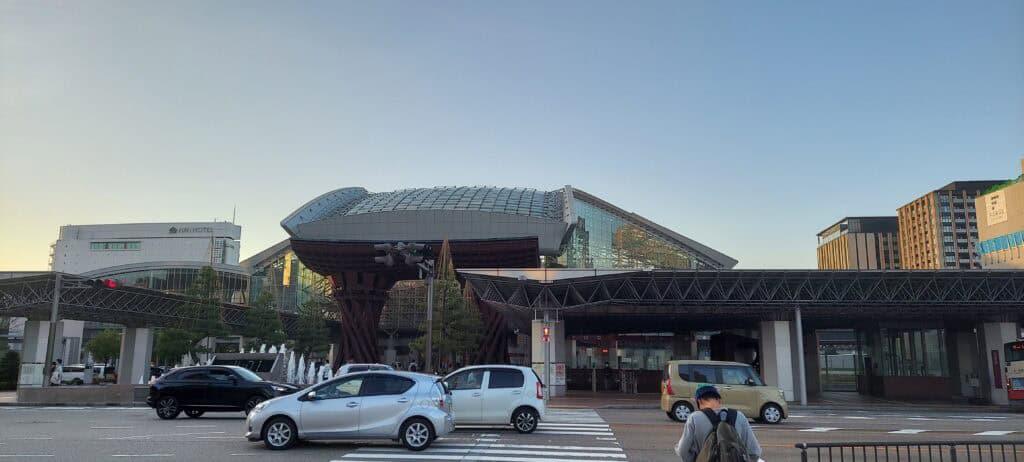
Budget Tips for Better Transportation Choices
Walk Often and Take Free Walking Tours
One of the best ways to see any place you visit is by walking.
Walking lets you explore at your own pace and is free.
Something that I tend to do when visiting a new place is to take advantage of free walking tours.
In a couple of hours, you get your bearings of the city, have touched some of the most important attractions, and learned some history of the place.
These free tours are often led by local students and provide great insights. Although free a small tip for the guide is appreciated.
Check out Public Transportation
In many of the larger cities around the world, buses and trains are cost-effective and give you an authentic travel experience.
If you have purchased a city pass transportation in the local buses and trains can often be included.
When traveling solo, with a friend, and especially with my daughter; the use of buses and trains is a way to keep the budget in control only when they’re reliable and safe.
Consider Hop-On Hop-Off Buses
Hop-on hop-off buses may not sound like a budget-savvy tip.
But this tourist-focused mode of transportation can actually be a great alternative.
They are handy for short stays where you need to maximize your time.
They are a great option when you don’t speak the language and getting around can be complicated.
I’ve used them when local transit routes were confusing.
When you purchase a ticket, they also often include discounts for restaurants and shops.
Budget Tips for Accommodations
Another item that represents a large amount of your budget is accommodations.
When traveling with my daughter, as when we travel solo, safety, and location are the most important criteria.
As with plane tickets I use apps like Booking.com and Expedia to search out hotels at the places I’m visiting.
Another way I save on accommodations is by using loyalty points.
Most hotel chains offer loyalty programs, and depending on your travel style, and your budget, you can choose the program that best suits your needs.
I’ve used programs from Accor, Hilton, Marriott, and even Booking.com (which has a loyalty system of its own) to get better room rates, free breakfasts, complimentary upgrades, and even free nights.
I’ve never stayed in Family-Run Guesthouses or Private Hostel Rooms, but they are an option.
These offer cultural experiences and can be cheaper than hotels.

Budget Tips for Eating Well for Less
Take advantage of your room’s fridge and hot water kettle
Food can take a chunk out of your budget. Staying in a hotel room with a small fridge can be a lifesaver.
But even if you don’t have a fridge, I have found that rooms in almost every country provide a means to heat water.
Boiling water gives me the option to make something like instant oats with some fruit and tea for breakfast.
After a long day, I can make some instant soup with some hard bread and cheese, and dinner is served.
Don’t Discount the local Deli or Market
Another budget-friendly alternative is to visit the local deli, supermarket, or bakery.
Whether you stop in for breakfast or to gather items for a picnic, this is usually a great alternative to save in the food category.
Eat Where the Locals Eat
Local eateries tend to be tastier and cheaper than tourist spots.
We’d like to share one word of caution when eating locally.
If anyone in your party suffers from food allergies, before sitting down and ordering food ask at the entrance if the establishment cooks or serves the foods you are allergic to.
We have been using Google Translate to help us with this. You can also ask the person at the front desk to write out on a piece of paper your particular type of allergy.
Other Options
If you love food, set aside a separate budget for dining out.
If you want to try a more expensive restaurant consider lunch instead of dinner.
Many restaurants offer fixed-price lunch menus with the same quality and service for less.
Check-out hotels that include breakfast in their price.
Many of these breakfasts give you a great head-start to your day without added cost.
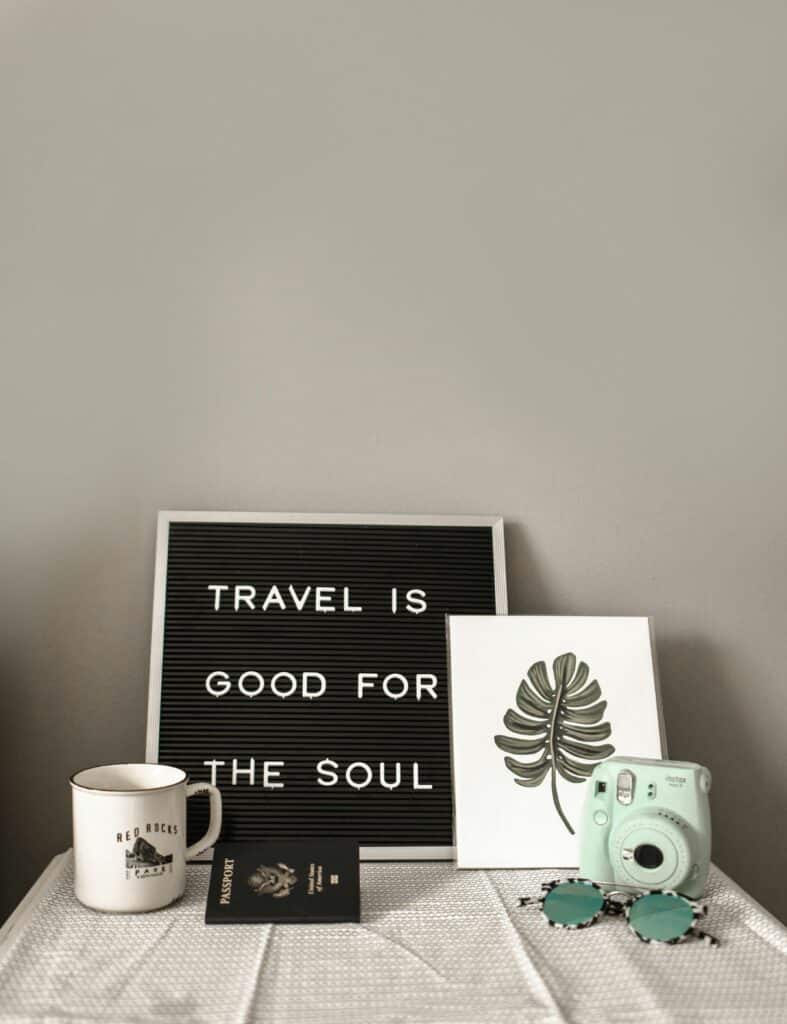
One Last Mom Tip for Budgeting and Learning
When we travel with children, especially young children, something that can derail the best of budgets are the incidentals.
We’re talking about things like; stickers, dehydrated ice cream from NASA, a stuffed animal, the cool pencils with the awesome writing pad.
They are all part of the experience.
But even when we budget it can quickly add up.
A strategy I used that helped me keep the spending under control and provided the opportunity to develop responsibility and budgeting skills was to assign a daily spending allowance.
The way it worked was that I would assign a certain amount of money for my daughter to spend each day.
This amount varied with the location of the trip, her age, and how much money I had for the trip.
We were very clear on what I would purchase (mostly food and attraction entrances) and she would have the allowance for incidentals and souvenirs.
How she chose to spend that money was completely up to her.
In my daughter’s case, she often came home with a profit. A great lesson in managing her budget from an early age.

Budgeting for Mother-Daughter Travel: Make It Happen Together
Traveling with your daughter isn’t just about taking a trip, it’s about making intentional choices.
Like anything else in life, travel doesn’t happen by chance.
You don’t just hope to have the money, you plan for it, and you prioritize it.
For me, spending time with my daughter has always been a top priority.
Our travels have not only given us unforgettable memories but also strengthened our bond in lasting ways.
We’ve learned to trust and lean on each other, and that connection goes far beyond the itinerary.
With a little planning and these tips, you can do it too.
How do you save and budget for travel? Do you have a favorite strategy?
Let me know in the comments—I’d love to hear from you!
